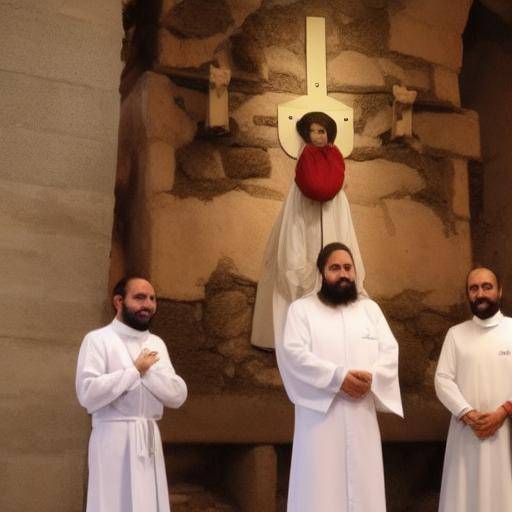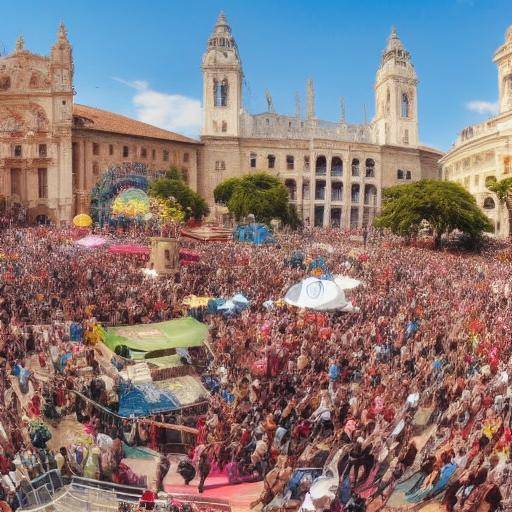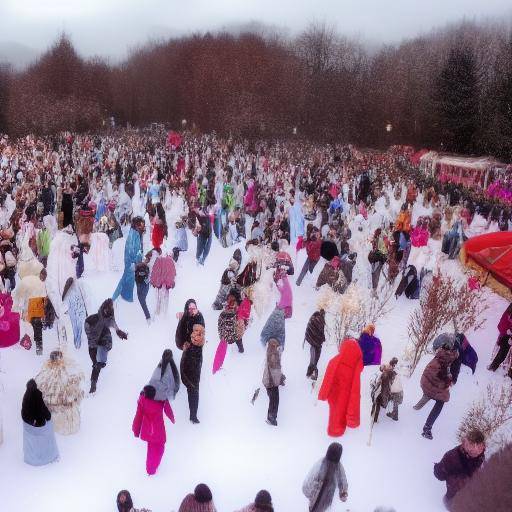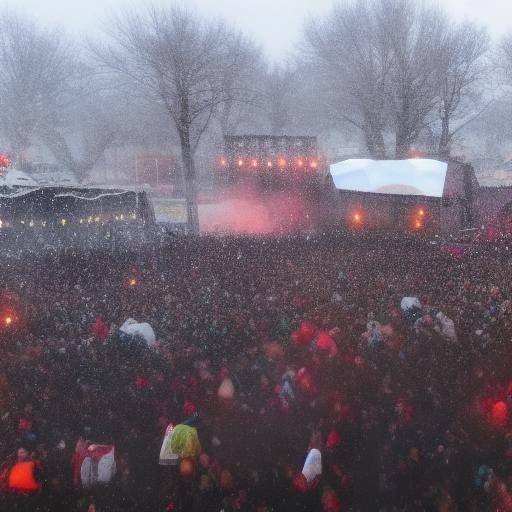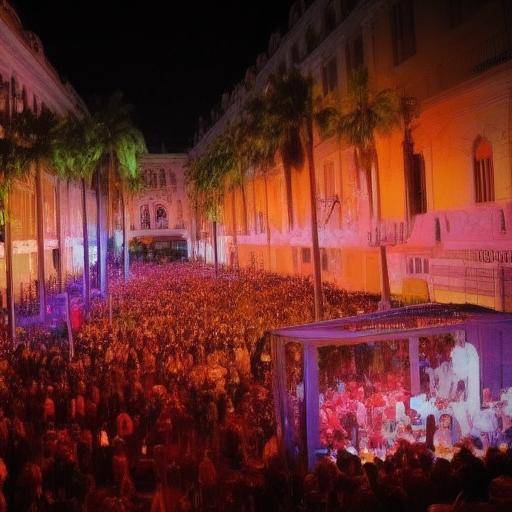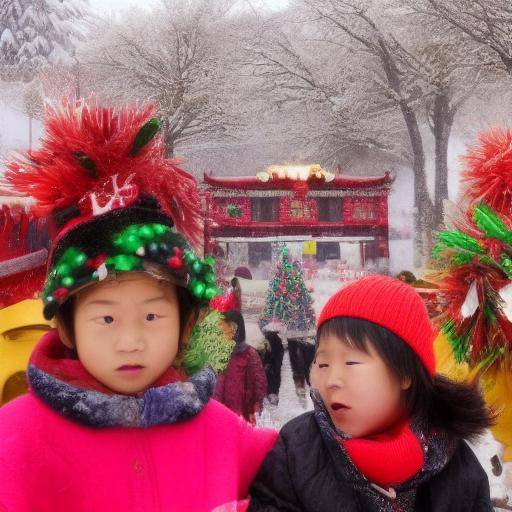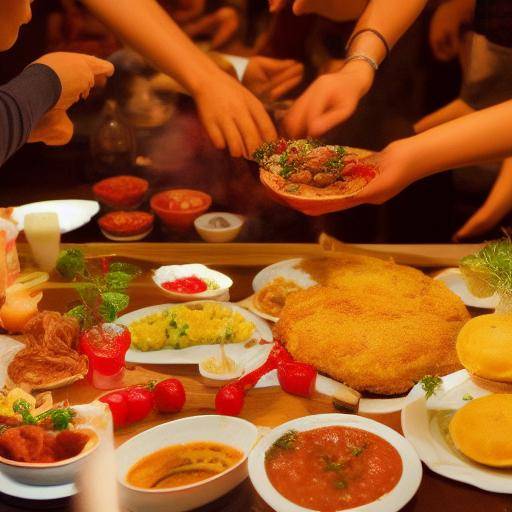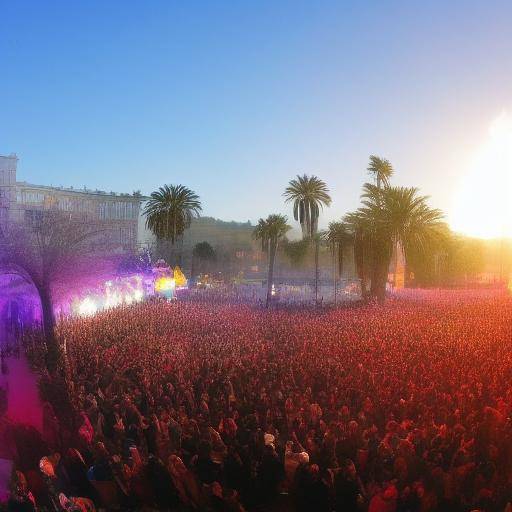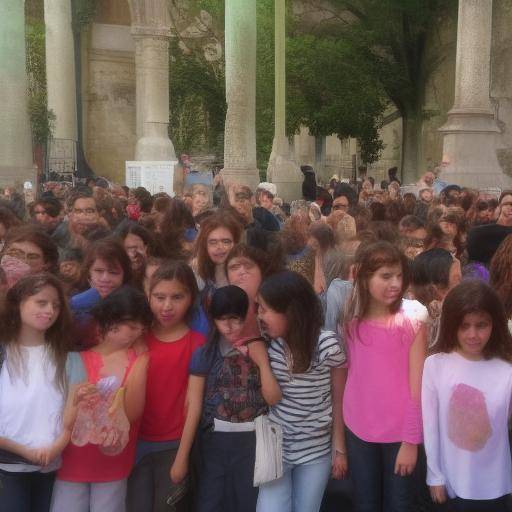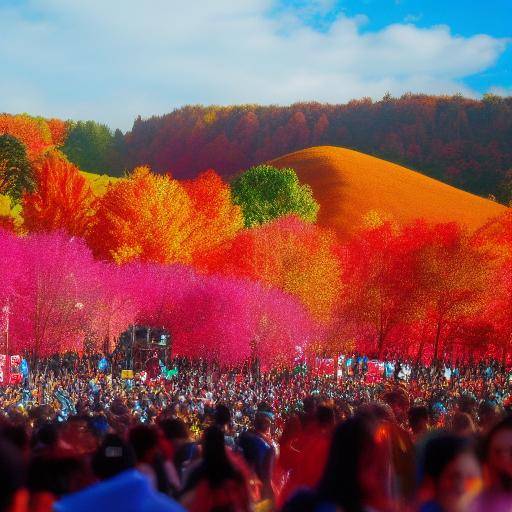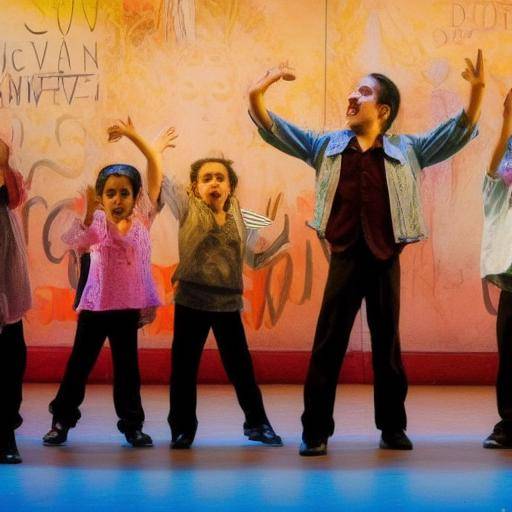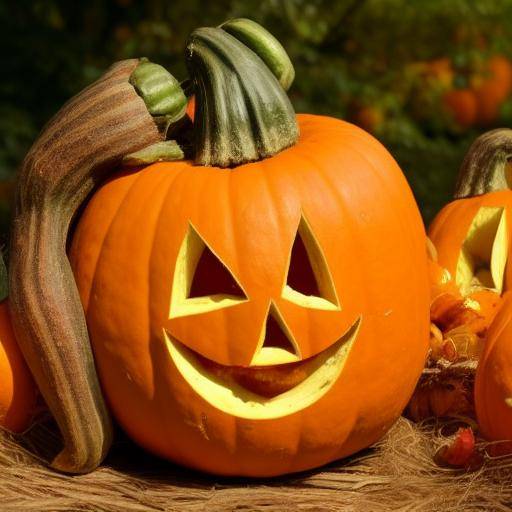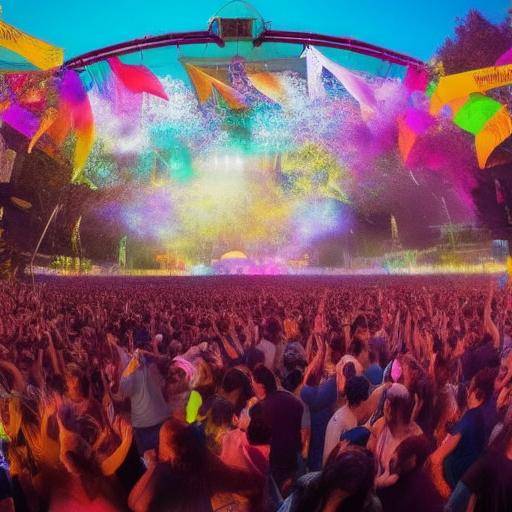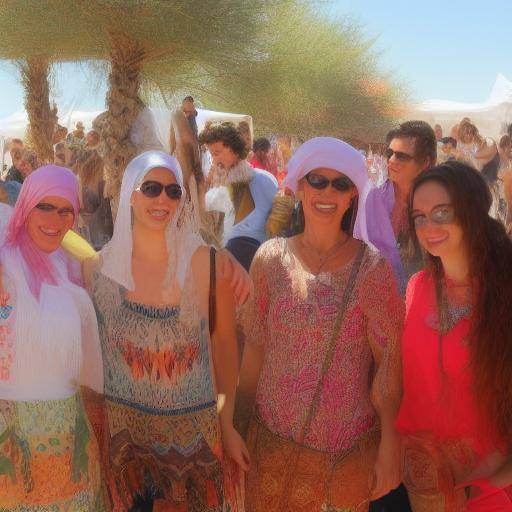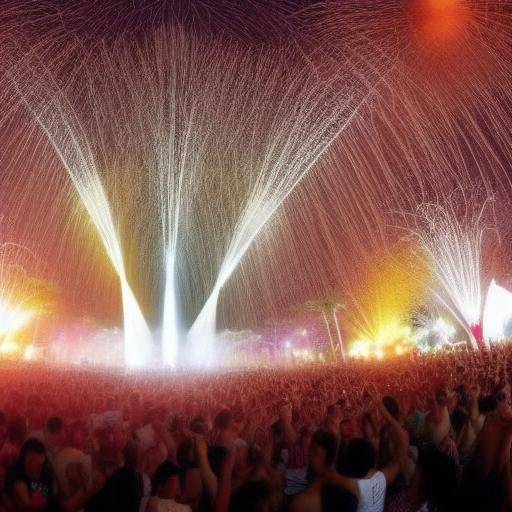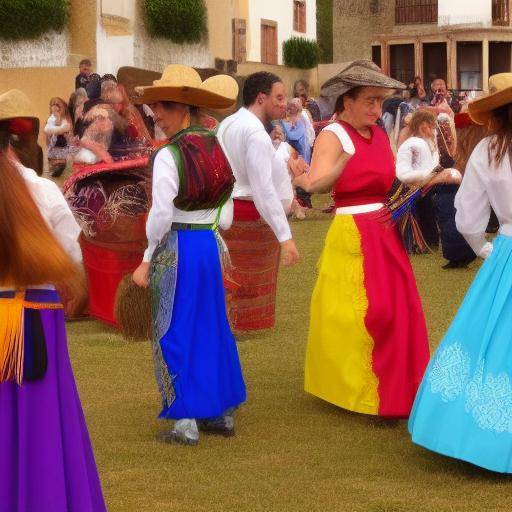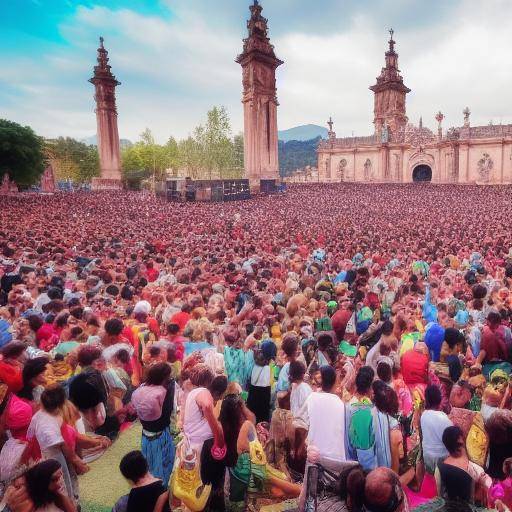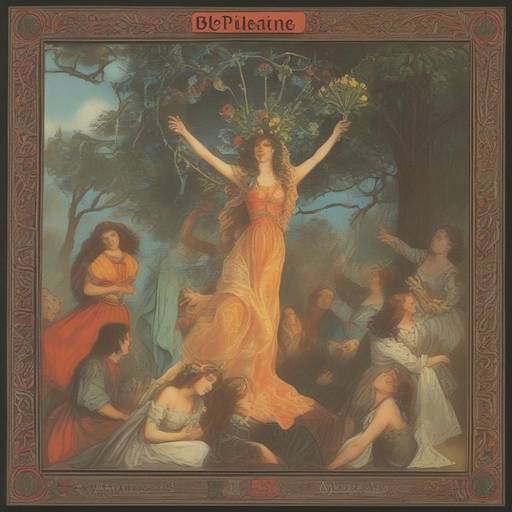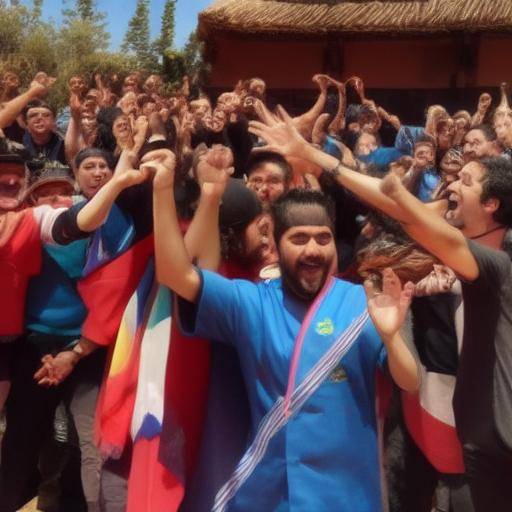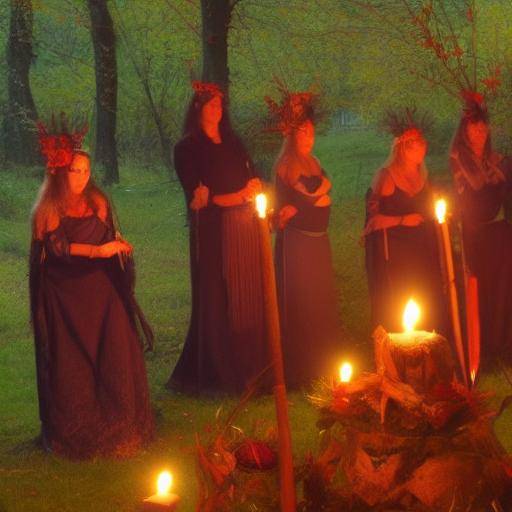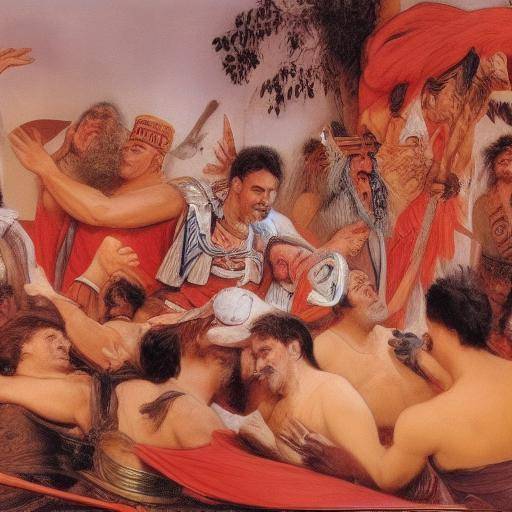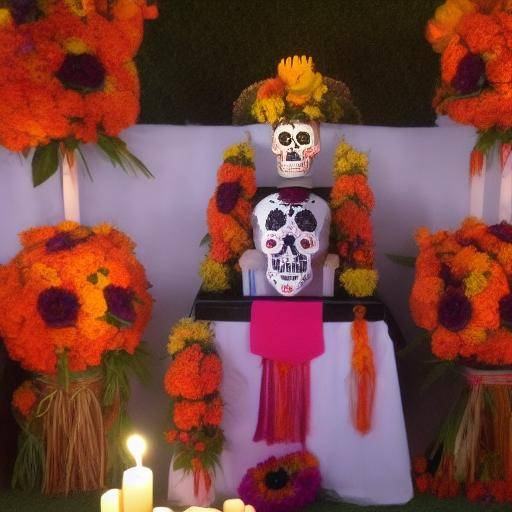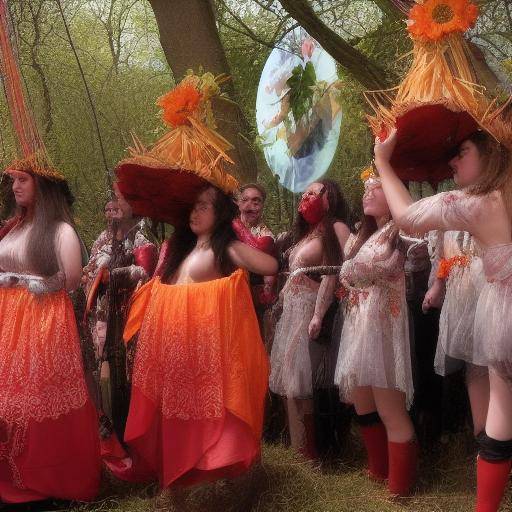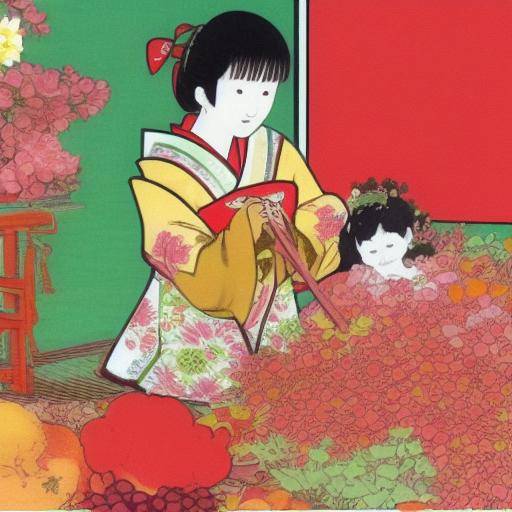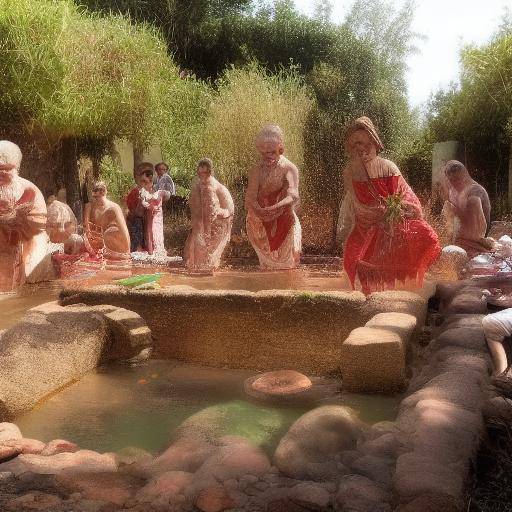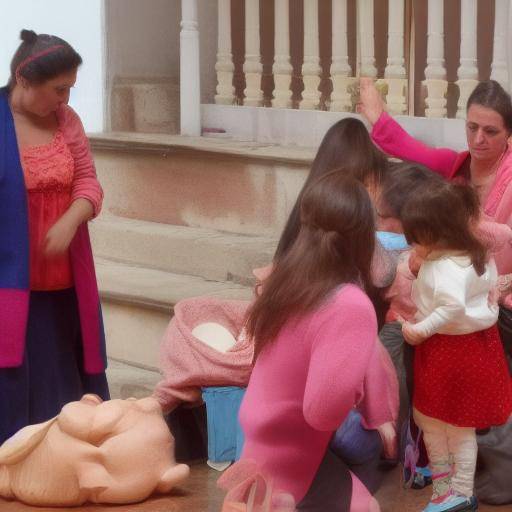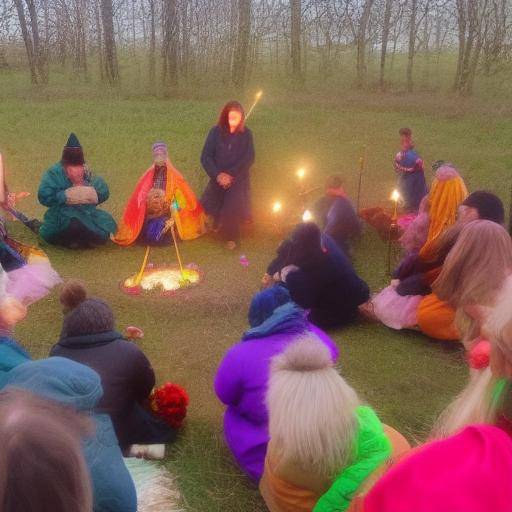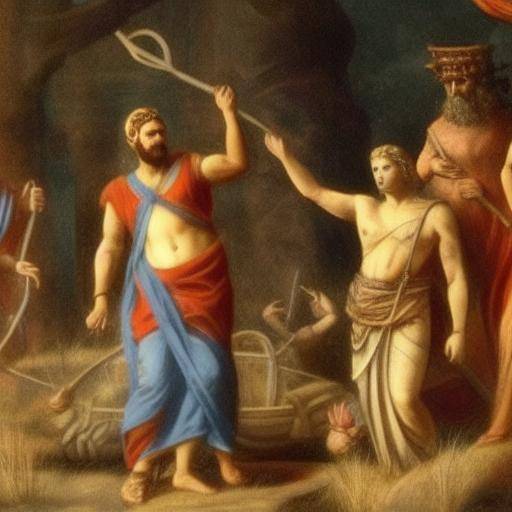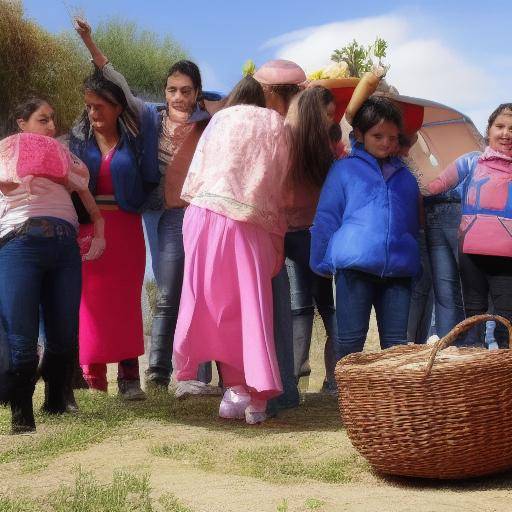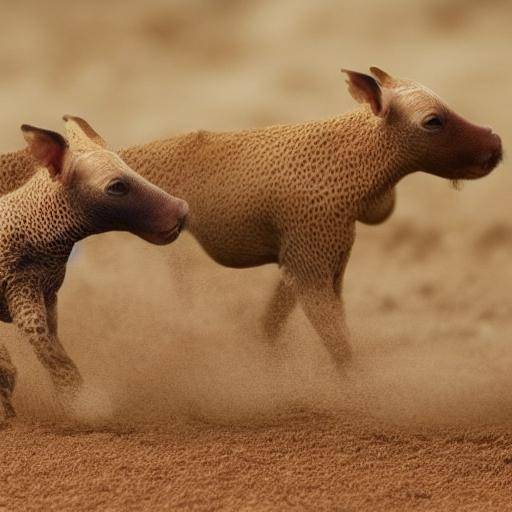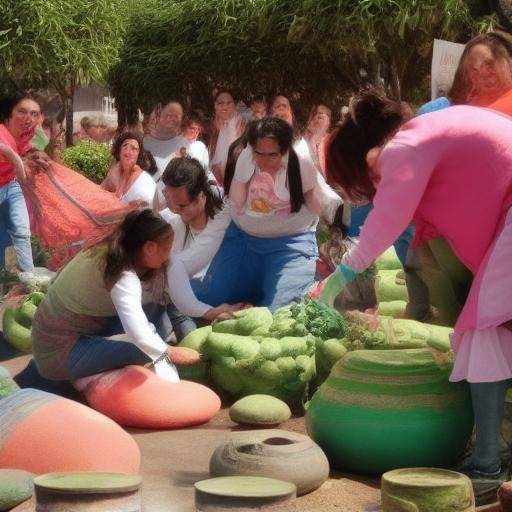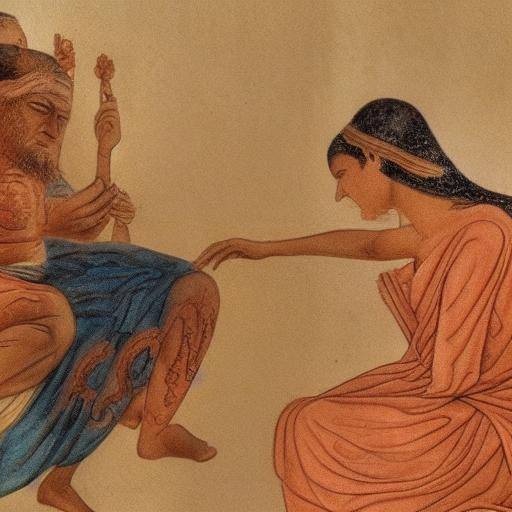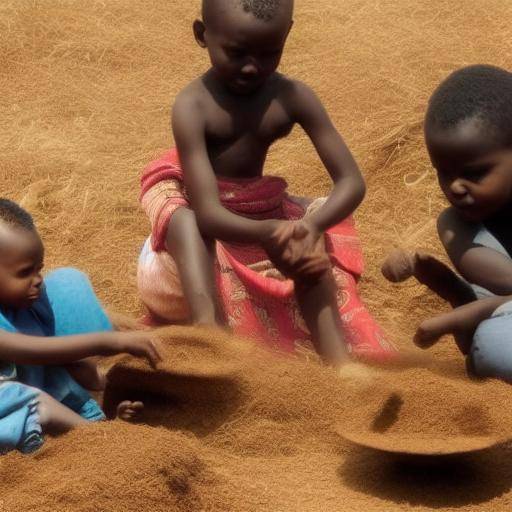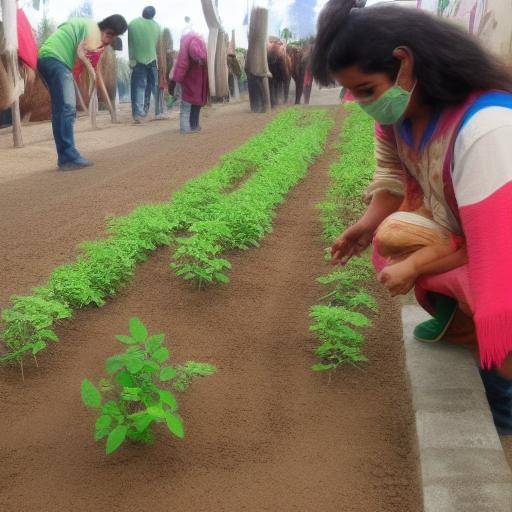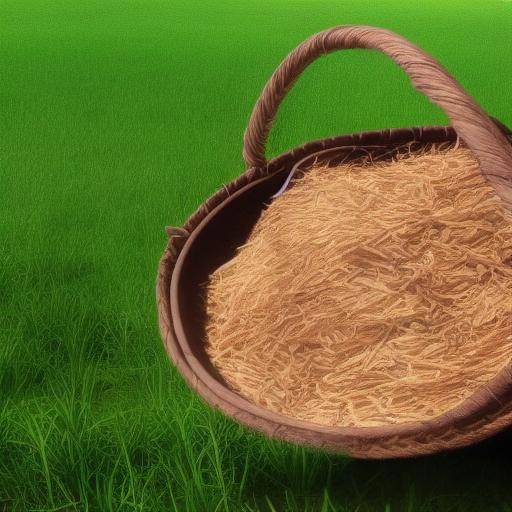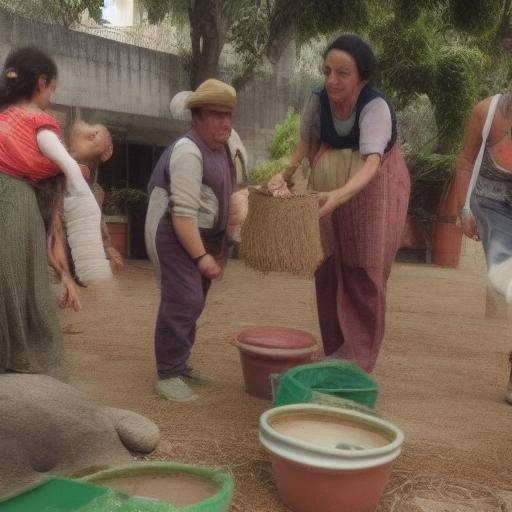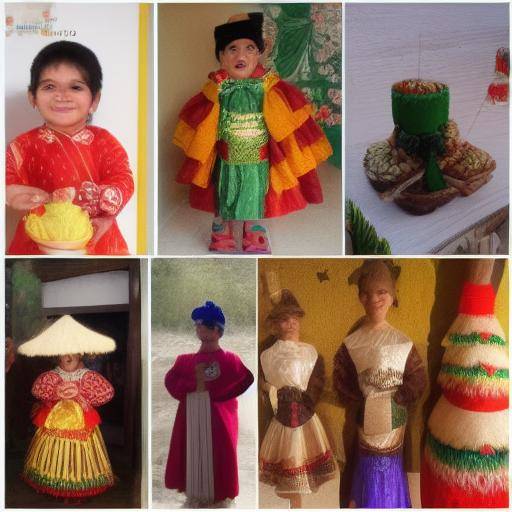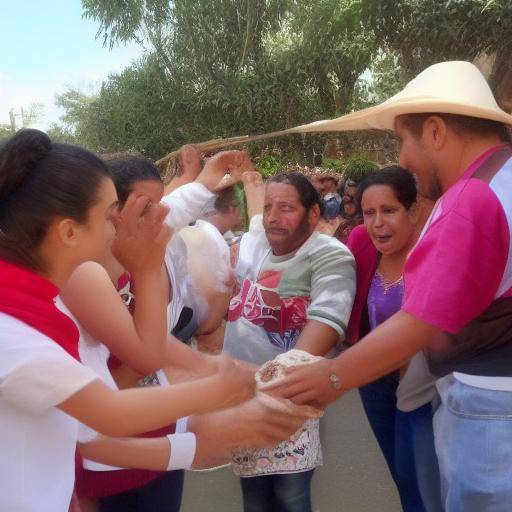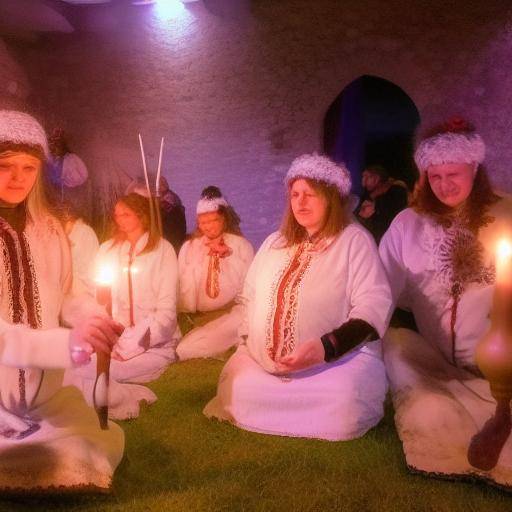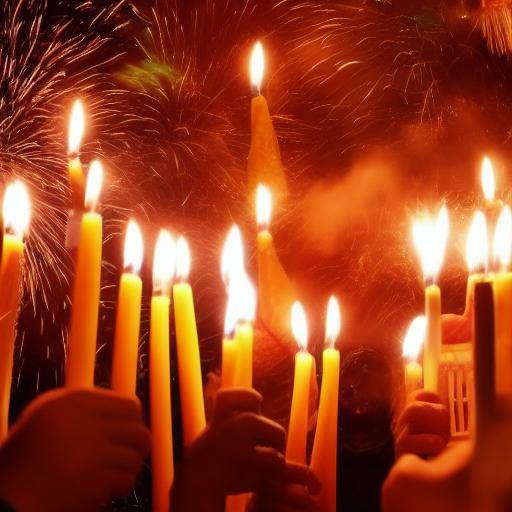
Beltane is a traditional festival that marks the beginning of summer in Celtic culture. This celebration, full of fetility and joy, represents the rebirth of nature and the bond between the spiritual and the earthly world. In this article, we will thoroughly explore the history, traditions and cultural importance of the Beltane Festival, as well as its rites of fertility and associated celebrations. Join us on this journey to learn more about this ancestral holiday.
Introduction
The Beltane Festival, also known as "Fiesta del Fuego", is an ancestral celebration that has resisted the passage of time and remains a fundamental part of Celtic culture. During Beltane, the power of the sun and the fertility of the earth are honored, thus marking the beginning of the season of growth and abundance. This festival is impregnated with rituals and traditions that celebrate the union between nature and the community, promoting renewal and joy.
In this article, we will thoroughly explore the history, ritual practices and traditions associated with the Beltane Festival. In addition, we will analyze in detail the fetility rites and celebrations that take place during this festival, showing how they have evolved over time and their meanings today.
History and Background
The Beltane Festival has its roots in the ancient Celtic culture, where it was given great importance to the cycle of nature and seasonal changes. This holiday marked the intermediate point between the spring equinox and the summer solstice, a crucial moment to celebrate the awakening of the earth after the winter lethargy. During Beltane, fires were lit as a symbol of purification and renewal, and people gathered to dance and participate in sacred rituals that honored fertility and prosperity.
Over the centuries, the Beltane Festival has undergone transformations due to the influence of different cultures and religious currents. The rise of Christianity, for example, led to the Christianization of the pagan holidays, integrating aspects of the Beltane Festival into celebrations such as St. John's Day.
In Deep: Analysis of Fertility Rites
The fertility rites that take place during Beltane reflect the intimate connection between sexuality, fertility and land. These rituals symbolize the renewal of the earth and the promise of abundance for the community. One of the best known elements of fertility rites in Beltane is the post of May, where dances are performed around a tree or post decorated with ribbons and flowers, symbolizing the union between the masculine and the feminine, and the creative power of nature.
Moreover, the tradition of jumping on fire during Beltane not only represents purification, but also the renewal of vitality and fertility. It is believed that this practice strengthens the link between participants and ensures protection and prosperity for the coming year. These fertility rituals not only celebrate human connection with the earth, but also foster joy and hope for the future.
Comprehensive Review: Beltane Celebrations
The Beltane celebrations are characterized by an atmosphere of jubile and community union. The exchange of crowns of flowers, the dance of ribbons around a decorated post and shared banquets are just a couple of examples of the ways people celebrate this holiday. Food plays a central role in the celebrations of Beltane, as traditional dishes are shared that honor the generosity of nature and encourage communion between friends and family members.
One of Beltane's most emblematic traditions is the washing of the face with the dew of the morning. It is believed that this act bestows youth and beauty, as well as protection against diseases and illnessesIndustry Insights and Expert Opinions
At present, the Beltane Festival has experienced a resurgence in different communities seeking to reconnect with their roots and celebrate nature. Experts on anthropology and cultural studies highlight the importance of preserving and understanding ancestral traditions, not only as a way of honoring history, but also as a way of finding meaning and connection in an increasingly disconnected modern world of nature.
The cultural anthropologist Dra. María Gómez, specializing in traditional festivities, says: "The Beltane Festival represents a unique opportunity to reflect on our relationship with nature and the importance of preserving practices that remind us of our interdependence with the natural world. These celebrations not only connect us to the earth, but also foster a sense of community and belonging."
It is clear that the Beltane Festival and its fertility rituals remain relevant today, not only as cultural expressions, but as reminders of the importance of honoring and respecting the fertility and vitality of nature.
Case Studies and Practical Applications
To better understand the impact of fertility rituals and associated celebrations, it is interesting to analyze cases of communities that have kept Beltane's tradition alive over the years. Glenwood village in Scotland is a prominent example of a community that has preserved Beltane's practices despite social and political changes. Every year, the inhabitants of Glenwood meet to light a great bonfire, dance around the post of May and participate in rituals that honor the fertility of the earth.
The positive impact of these celebrations is reflected in the cohesion of the community and in the transmission of knowledge and values to younger generations. These case studies show that Beltane's traditions are not only culturally relevant, but also have a positive impact on the social and emotional dynamics of the communities that celebrate them.
Future Trends and Predictions
As awareness of the importance of preserving ancestral traditions and honoring nature continues to grow, the Beltane Festival and its fertility rituals are expected to remain relevant and attract a more diverse audience. In an increasingly technological and urbanized world, these festivities offer a unique opportunity to reconnect with land, promote values of sustainability and respect for the environment, and foster greater appreciation for fertility and the cycle of life.
In short, the Beltane Festival, with its fetility rites and its associated celebrations, represents much more than an ancestral festival; it is a profound reminder of the interconnection between humanity and nature, as well as an opportunity to renew hope, joy and gratitude for all that the earth gives us.
Conclusion
In this extensive tour of the Beltane Festival, rites of fertility and associated celebrations, we have explored the rich history, cultural significance and contemporary relevance of these ancestral festivities. From its origins in Celtic culture to its impact today, Beltane remains a moment of celebration, renewal and unity.
In reflecting on the significance of these festivities, we can recognize their importance as reminders of our connection to the earth and the need to preserve and honor the fertility and vitality of nature. Whether through ancient rituals, community holidays or simple acts of gratitude to the earth, the Beltane Festival invites us to celebrate the life, renewal and beauty that surrounds us.
That this exploration of the Beltane Festival has been informative and revealing! We invite you to continue discovering more about these fascinating holidays and to consider how you can honor nature and fertility in your own life.
Frequently asked questions
1. What is the Beltane Festival?
The Beltane Festival is a traditional festival that marks the beginning of summer in Celtic culture. It is characterized by fertility rituals, community celebrations and the veneration of the connection between nature and humanity.
2. When is the Beltane Festival held?
The Beltane Festival is typically held on April 30 or May 1, marking the midpoint between the spring equinox and the summer solstice.
3. What are the fertility rites associated with the Beltane Festival?
Fertility rites at the Beltane Festival include the post of May, the dance around the pole, jumping on fire, the washing of the face with the dew of the morning, among others.
4. How is the Beltane Festival celebrated today?
At present, the Beltane Festival is held with ceremonies, dances, bonfires, exchange of crowns of flowers, community banquets and other activities that reflect the connection with nature and the celebration of fertility.
5. What is the importance of the Beltane Festival in Celtic Culture?
The Beltane Festival is of great importance in Celtic culture, as it represents the rebirth of nature, the fertility of the earth and the union between the community and nature.
6. What are the current perspectives on the celebration of the Beltane Festival?
Current perspectives on the Beltane Festival highlight their relevance to reconnecting with nature, preserving ancestral traditions and fostering values of sustainability and respect for the environment.
We hope that these answers have clarified your doubts about the Beltane Festival, fertility rites and associated celebrations!
With this article, you will immerse yourself in the rich tradition of the Beltane Festival, exploring rites of fertility and celebrations that have lasted over the centuries. May this experience be a source of inspiration and connection to nature!

